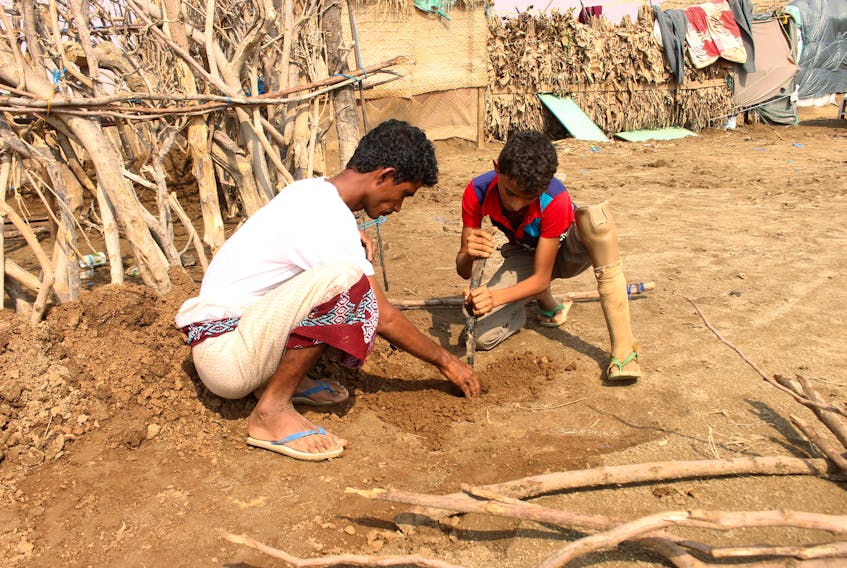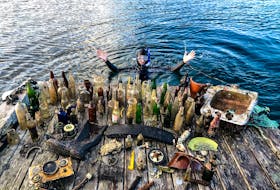John D. Cameron, Dalhousie University and Robert Huish, Dalhousie University
It is a bad idea to cut off your nose to spite your face. Similarly, it would be a catastrophic move for Canada’s next prime minister to scrap international development assistance.
Yet two party leaders, Maxime Bernier and Andrew Scheer, propose to do exactly that. Scheer wants a 25 per cent reduction in Canada’s spending on development assistance, while Bernier calls for an almost complete elimination of it.
Such promises are reckless and deeply misguided. Cutting development assistance in the ways that Scheer and Bernier suggest reveals an alarming misunderstanding of what aid is.
Development assistance has its problems. Nevertheless, it is crucial for reducing extreme poverty. And it fosters important international relations that can benefit all Canadians.
Official development assistance, or international aid, is one of Canada’s most important tools in putting its values into practice on a global scale. But surprisingly, Canada is quite stingy when it comes to giving.
Read more: Neither hero nor villain: Canada stuck in the middle of the pack on international aid
According to the Organization for Economic Cooperation and Development, Canadian international aid in 2018 represented 0.28 per cent of our gross national income (GNI).
This marks a continuation of the long-term decline in Canadian aid since the 1980s, when we contributed only 0.50 per cent of our GNI. It makes Canada one of the least generous nations among the world’s 30 wealthiest countries.
Numbers don’t add up
Scheer’s proposed 25 per cent cut to Canadian aid reflects two problems.
First, the numbers don’t add up to the $1.5 billion in savings that he says would go to domestic priorities. Second, it shows a loose grip on what development assistance is, and the state of global poverty today.
Scheer stated that the $1.5 billion in cuts will come from money given to “middle- and upper-income countries.” But global poverty is complex. The largest concentrations of extremely poor people (those who live on less than US$1.90 a day) actually live in middle-income countries. Cutting aid to those countries undermines efforts to help the largest groups of extremely impoverished people in the world.
Scheer targeted aid cuts towards relatively wealthy countries “like Italy, Brazil, Turkey and hostile governments like Iran.” In fact, according to the Canadian International Development Platform, Canada sent $2 million in aid to Iran, $4 million to Brazil, $5 million to Turkey and $2 million to Italy (in disaster assistance) in 2017-18. Those amounts make up less than one per cent of the $1.5 billion Scheer proposes to cut.
Where will the other 99 per cent of the cuts come from?
Scheer would need to cut aid to countries that rank as “poor and extremely poor,” such as Haiti and Afghanistan. Countries like Jordan that provide support to almost a million Syrian refugees would also be on the chopping block. Scheer wants to re-allocate these funds back into Canadian pockets.
Canadian values?
Does cutting support for the world’s poorest and most vulnerable people reflect the values of Canadians, including those who are likely to vote for Scheer? We hope not. But how are the other parties doing when it comes to foreign aid?
The Liberal platform says very little about ending global poverty. In government, the Liberals introduced the Feminist International Assistance Policy in 2017. It is a laudable initiative to promote gender equality by strengthening the rights of women and girls around the world.
But Prime Minister Justin Trudeau has allocated scant new funding to support it. Under the Liberal government, funding for global poverty relief is still lower than it was during Stephen Harper’s Conservative government.
The NDP and Green Party platforms do make specific commitments to increase Canadian funding to reduce global poverty. The New Democrats commit to increasing Canadian development assistance to the goal of 0.7 per cent of gross national income, but it gives no time line for that increase.
The NDP pledges to increase Canadian contributions to the Global Fund to Fight AIDS, Tuberculosis, and Malaria, which are the world’s three most deadly diseases. It also commits to uphold the rights of women and girls. Finally, the NDP promises to hold Canadian corporations accountable for their operations at home and overseas. This is a key issue given the high number of deadly conflicts around the world involving Canadian resource extraction companies.
Greens pledge to resurrect CIDA
The Green Party platform also commits to increasing global poverty relief to 0.7 per cent of GNI. It promises to resurrect the Canadian International Development Agency (CIDA), disbanded by the Conservatives under Harper. The Green Party platform also commits to boost funding to $4 billion per year by 2030 for the global Green Climate Fund and the Global Environmental Facility.
Green Party Leader Elizabeth May wants to invest in climate change mitigation and adaptation strategies to respond to global environmental challenges. Finally, May promises to align federal policy with the United Nations Sustainable Development Goals.
Is the Canadian aid system perfect? No. It has a long history of underfunding, politically motivated projects and at times questionable impact. Can it be improved? Absolutely.
Canadians will continue to reflect on their own values and what matters to them in the final weeks leading up to the Oct. 21 election. For those who are likely to give their vote to Scheer, we hope they’ll consider how foreign aid pertains to those values on the global stage. Not just to save our face, but our nose too.
John D. Cameron, Associate Professor, Department of International Development Studies, Dalhousie University and Robert Huish, Associate Professor in International Development Studies, Dalhousie University
This article is republished from The Conversation under a Creative Commons license. Read the original article.









